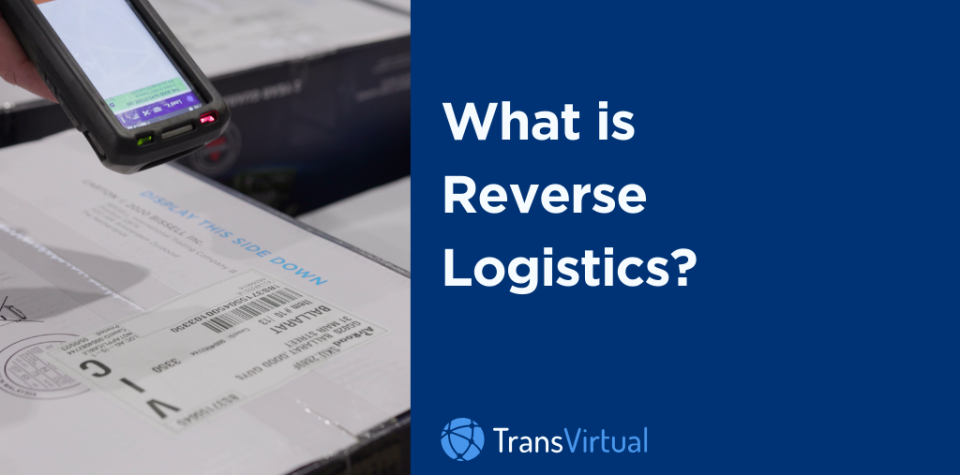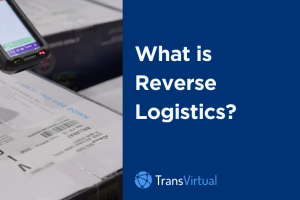Hassle-free return policies have become a key purchase driver in the past years. Many consumers now expect seamless returns as a standard part of their shopping experience.
For businesses, a customer returning an item isn’t exactly music to their ears. It takes up extra resources and more importantly, returns management is expensive.
A study by Deloitte highlights that reverse logistics contribute largely (60%) to the high costs of returns.
By understanding reverse logistics, including the different types of reverse logistics and how they work, supply chain professionals can leverage their knowledge to reduce costs while maintaining efficient operations.
What is Reverse Logistics?
Reverse logistics refers to processes and strategies for managing the return of goods from customers.
As the name implies, this is the extra step in supply chain management where all sold goods go back to the provider or warehouse. Common reverse logistics examples are when a customer is unhappy with a product they’ve received, if a product is recalled, or for managing products at the end of their life cycle.
The reverse logistics process also involves returns or recycling. It can cover recycling, reclamation of raw materials, reselling items, and refurbishment. It also includes transportation and the managing and selling of surplus.
Today, reverse logistics is one of the most challenging aspects of the world of ecommerce freight logistics. When done right, reverse logistics can make sure your costs decrease and your customer satisfaction increases.
What we know as forward logistics (or traditional logistics), on the other hand, involves product development, manufacturing, distribution, and fulfillment to the end users.
We can’t understand reverse logistics without examining how it works. So, let’s explore it briefly.
How Do Reverse Logistics Processes Work?
The goal of reverse logistics is to regain value from the materials or items sold. Or, in some cases, to safely dispose of them and reduce waste.
It’s also crucial for boosting customer loyalty and turning them into repeat buyers.
A swift, cost-effective, and convenient return process is essential to avoid reputational damage and meet demanding customer expectations.
Steps to Effective Reverse Logistics Process
In general, the reverse logistics process begins at the customer level, with the product getting returned and sent back to the distribution centre.
Once the returned product arrives, staff inspect and classify it as either: to fix, resell as new, resell as a return, recycle, scrap or refurbish.
For products that need repair or recycling, distribution sends it back to the manufacturer, where the recovery or disposal process takes place.
Consider the electronics industry, where reverse logistics is common. Say you’ve ordered a smartphone online but received a defective item and decide to process a return.
The distributor then returns the item to the manufacturer, who has to organise shipping, testing of the product, repairing, recycling, or disposal.
Types of reverse logistics
There are different types of reverse logistics that your business needs to be on top of.
Returns management
Returns management is the common reverse logistics process. It occurs when a customer returns an item because its damaged, doesn’t fit, change of mind, etc.
The thing about returns is that they’re unavoidable.
You might conduct the most robust quality checks but customers could still end up changing their mind about your product. And if you prohibit returns, you’ll end up losing out to competitors who do.
To ensure customer satisfaction while keeping costs low, implement a clear return policy and make a seamless returns experience a key part of your reverse logistics strategy.
Re-manufacturing
This kind of reverse logistics focuses on reworking, rebuilding, or repairing products. Companies will recover parts that are still usable to manufacture other products.
Packaging Management
Packaging management deals with reusing packaging materials to avoid wastage.
Unsold products
If a product did not sell, whether because of obsolescence, poor sales, or delivery refusal, this type of reverse logistics gets the product sent back from retailers to the distributor or manufacturer.
End-of-Life (EOL)
If a product is considered not to work anymore and no longer useful, it is likely reached the end of their product life cycle EOL. Manufacturers usually dispose of these products, either recycling them or finding other ways of getting rid of them.
Failed deliveries
If a driver fails to deliver a product, it returns to the sorting centre. The sorting centre sends the product to where it came from, a distributor or manufacturer. There are some sorting centres that have the capability of understanding why the delivery failed and fixing the problem.
Leases and rentals
If a product has reached the end of its rental or lease contract, the owner of the product can choose what to do with it. It can involve recycling, remarketing, or reworking the product.
Repairs
In some instances, items that were defective can be returned to the customer at no charge once repaired.

Benefits of reverse logistics
One of the most crucial benefits that reverse logistics offers is the uninterrupted flow of goods. Companies that use these logistics are taking part in a sustainable economy where there is less waste.
It also creates trust. Customers who know they can return defective items will be more likely to purchase from the company again.
It also reduces costs because it converts items and parts that would have otherwise been considered waste into usable items again, helping to reduce waste. This not only minimises the environmental impact but also increases efficiency in sustaining the overall environmental impact. Efficiency is another benefit it can offer, allowing customers to receive repaired items or refunds in a timely manner.
How to optimise reverse logistics
There are ways of optimising your company’s reverse logistics to make them more efficient. Effective inventory management is crucial for managing inventory levels and identifying inefficiencies in the reverse logistics process. Here are the crucial ones to improve the process.
Outsource
One of the most efficient ways of improving reverse logistics is to turn to a company that specialises in it. This can allow you to focus on your expertise while still receiving excellent logistics.
Leverage data
Integrating a reverse logistics system poses challenges that your business needs to plan for.
To resolve this, collect data on returned items to learn why the customer returned them. It is much easier, then, to make informed changes to the design or manufacturing process.
Centralise return centres
When you bring your operations into one place, you increase efficiency. There’s one source for data, policies, and processes. Having a centre that only deals with returns can solve many of the logistics issues you may face.
Improve your transportation process
Examine the transportation process on a regular basis to pinpoint issues and causes of delays. Maximise efficiency by training drivers and delivery people to do a number of different tasks in one delivery. GPS tracking and software that specialises in monitoring deliveries is also essential.
Use automation
Automation is a great way to optimise reverse logistics management. There are software options that can track deliveries and returns, while others can provide analytics to help you improve your logistics.
Warehouse management software plays a significant role in managing reverse logistics and enhancing inventory management to reduce costs and increase customer loyalty.
Build a Solid Reverse Logistics Plan Today
Now that we’ve unpacked the question “what is reverse logistics”, it’s time to put these steps into action.
If you’re in the hunt for more logistics insights, make sure to check out our expert guides. Looking for a transport management solution? Transvirtual can help. Learn more about our products and services today.



